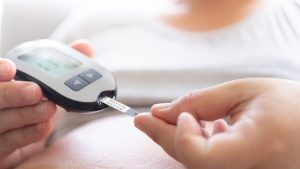Articles / Testosterone therapy for low libido – without the hype

Menopause influencers are singing the praises of testosterone as a cure for everything from depression to brain fog, with claims that extend far beyond the evidence base, says Dr Ginni Mansberg, a Sydney GP and author of ‘The M Word: How to Thrive in Menopause’.
“The only evidence for testosterone therapy comes for the treatment of hypoactive sexual desire disorder,” Dr Mansberg explains.
“But if your patients are on TikTok or they’re on Instagram, they are going to come across menopause influencers, including a large number of doctors, both here in Australia and the UK – and big menopause doctors with huge followings in the United States – who would basically advocate that testosterone therapy be put in the water for menopausal women, because it improves absolutely everything.”
However despite the lack of evidence in some areas, up to one in three postmenopausal women experience very low sexual desire, and may benefit from transdermal testosterone if they meet the diagnostic criteria for Hypoactive Sexual Desire Disorder (HSDD).
HSDD is a psychological disorder characterised by lack of desire, lack of meaningful sexual encounters and clinically significant distress.
That last point is crucial, Dr Mansberg emphasises. If the patient isn’t feeling distressed about their symptoms, it does not meet the diagnostic criteria laid out in the ICD-10, or the International Society for the Study of Women’s Sexual Health 2016.
The Decreased Sexual Desire Screener is a validated five question questionnaire. The first four questions assess if desire has reduced and is causing distress, while the fifth question aims to rule out other causes of low sexual desire, such as depression, injury, pregnancy or substance misuse.
Dr Mansberg says if you have a rapport with your patient, some contexts lend themselves to asking about sexual wellbeing—discussions about genitourinary syndrome of menopause, a cervical cancer screening where you might notice dryness, or if you’ve asked about their relationship more broadly, can all be opportunities. If you’re not comfortable jumping into it then and there, she suggests emailing the Decreased Sexual Desire Screener link to patients so they can do it in their own time and then discuss in a follow up visit.
She urges fellow GPs to push past any discomfort in discussing this topic, as it can make a big difference to women’s lives.
“We want to make sure that we aren’t letting these women lose something that’s really, important to them for something that is so treatable and so preventable.”
Although lower testosterone levels have been linked to decreased sexual desire, “there’s no good scientific data to show that serum levels of testosterone, even taken first thing in the morning, correlate well with that diagnosis of hypoactive sexual desire disorder,” Dr Mansberg notes.
However, it’s important to do a blood test to check androgen levels and screen out any disorders of hyperandrogenism, particularly an adrenal tumour.
Professor Rod Baber, co-author of the International Menopause Society’s global consensus statement on testosterone therapy, says a baseline serum SHBG and testosterone is recommended prior to treatment and again after 2-3 months to ensure a response to treatment and if necessary to adjust the dose.
Several biopsychosocial factors influence sexual desire and satisfaction. Cultural and religious experiences, thoughts and beliefs about sex and women’s roles in society, history of trauma, overall health, endocrine function and hormones (including estrogen, testosterone, progesterone, dopamine and more) all play a role.
In women who previously had a healthy and satisfying sex life and libido, but began having problems during or after menopause, it’s always important to assess the biopsychosocial components.
While women produce just 3-10% of the amount of testosterone produced by men, it plays a pivotal role in sexuality and metabolic function. As women age, their serum testosterone levels decrease, and by the time a woman is 40 they are about a quarter of the levels they were at age 20.
In 2019, the International Menopause Society published a global consensus position statement on the use of testosterone for women.
The treatment has good evidence for improving a whole range of domains in sexual wellbeing for postmenopausal women.
“So what we’re talking about is improved desire, arousal, orgasms, pleasure and sexual responsiveness— and we also get a reduction in worries and distress around sexual encounters,” Dr Mansberg says.
Systemic testosterone is not aiming to turn postmenopausal women into men, she adds.
“What we’re trying to do is take her postmenopausal levels of testosterone and just move them up not very much, to premenopausal levels so that she can really address the biological part of her hypoactive sexual desire disorder, which is really big for so many women,” she says.
The IMS position statement found that when taken at doses that approximate physiological testosterone concentrations in premenopausal women, systemic testosterone in postmenopausal women is associated with:
Tip: The only approved testosterone product for women is Androfeme 1 cream, applied daily to buttocks or thighs. Dr Mansberg recommends applying the cream to different sides/parts of the outer buttocks or thighs because if testosterone is continuously placed in the same spot, dark hair will grow in that area.
No long-term data
Patients need to be aware that we don’t have safety data beyond two years, and the studies have specifically excluded women at high cardiometabolic disease risk. Most studies have included women taking concurrent oestrogen therapy, and all have been relatively short duration.
“If they do have a pre-existing cardiac, liver or kidney disease, it’s not a contraindication. We just say you have to closely monitor them,” Dr Mansberg says.
Oral testosterone therapy is associated with adverse lipid profiles with negative effects on HDL-cholesterol and LDL-cholesterol levels, and is NOT recommended according to the International Menopause Society statement.
The statement also specifically recommends against testosterone injectables, pellets or any formulations that result in supraphysiological blood concentrations of testosterone, or any compounded preparations.
“You tend to get a lot of dumping and irregular serum levels. So we do prefer to give it transdermally like we do so many other forms of menopause hormone therapy as well,” Dr Mansberg says.
To hear more on this topic, register here for Healthed’s free webcast on 30 April.
Acknowledgements: This article was reviewed by Professor Rod Baber, an obstetrician and gynaecologist who heads the menopause and menstrual disorders clinic at Royal North Shore Hospital. He is Past President of the Australasian Menopause Society and the International Menopause Society.

Managing Paediatric Anxiety in General Practice

OSA – Which Test for Which Patient

Musculoskeletal Health in Menopause

AHPRA-Proof Your Practice – Social Media Risks for GPs



Strongly agree
Somewhat agree
Neutral
Somewhat disagree
strongly disagree
Listen to expert interviews.
Click to open in a new tab
Browse the latest articles from Healthed.
Once you confirm you’ve read this article you can complete a Patient Case Review to earn 0.5 hours CPD in the Reviewing Performance (RP) category.
Select ‘Confirm & learn‘ when you have read this article in its entirety and you will be taken to begin your Patient Case Review.
Menopause and MHT
Multiple sclerosis vs antibody disease
Using SGLT2 to reduce cardiovascular death in T2D
Peripheral arterial disease
